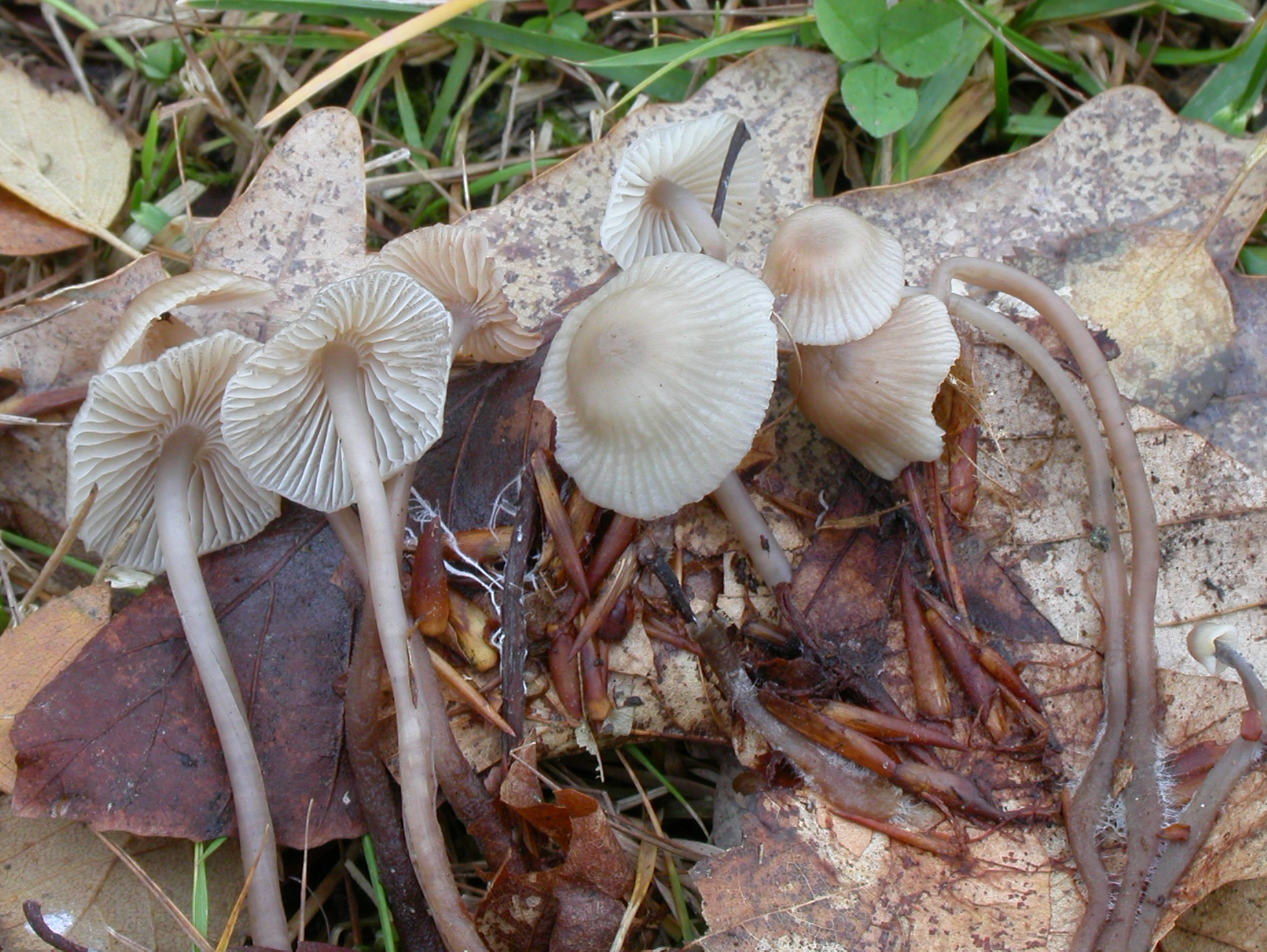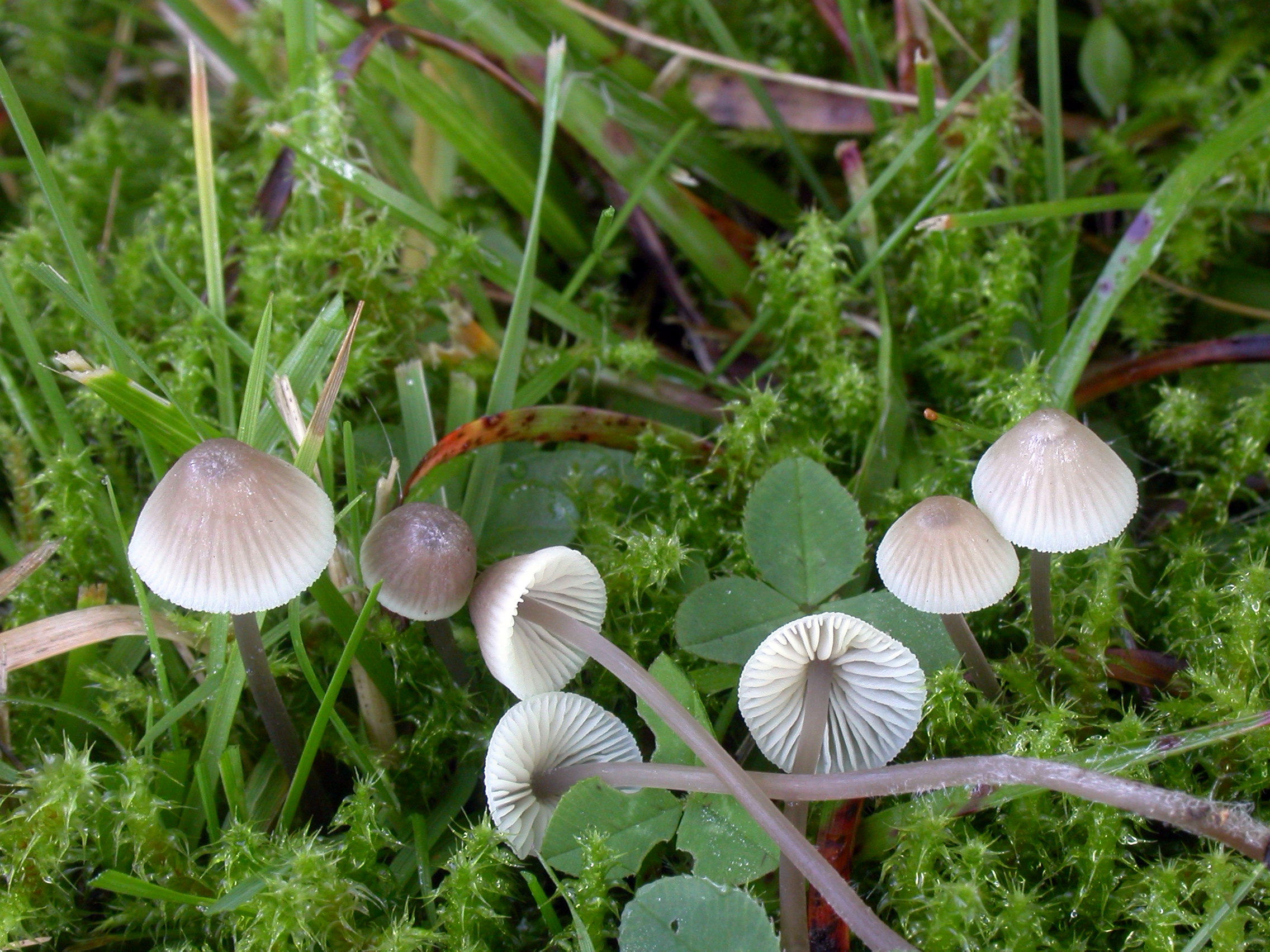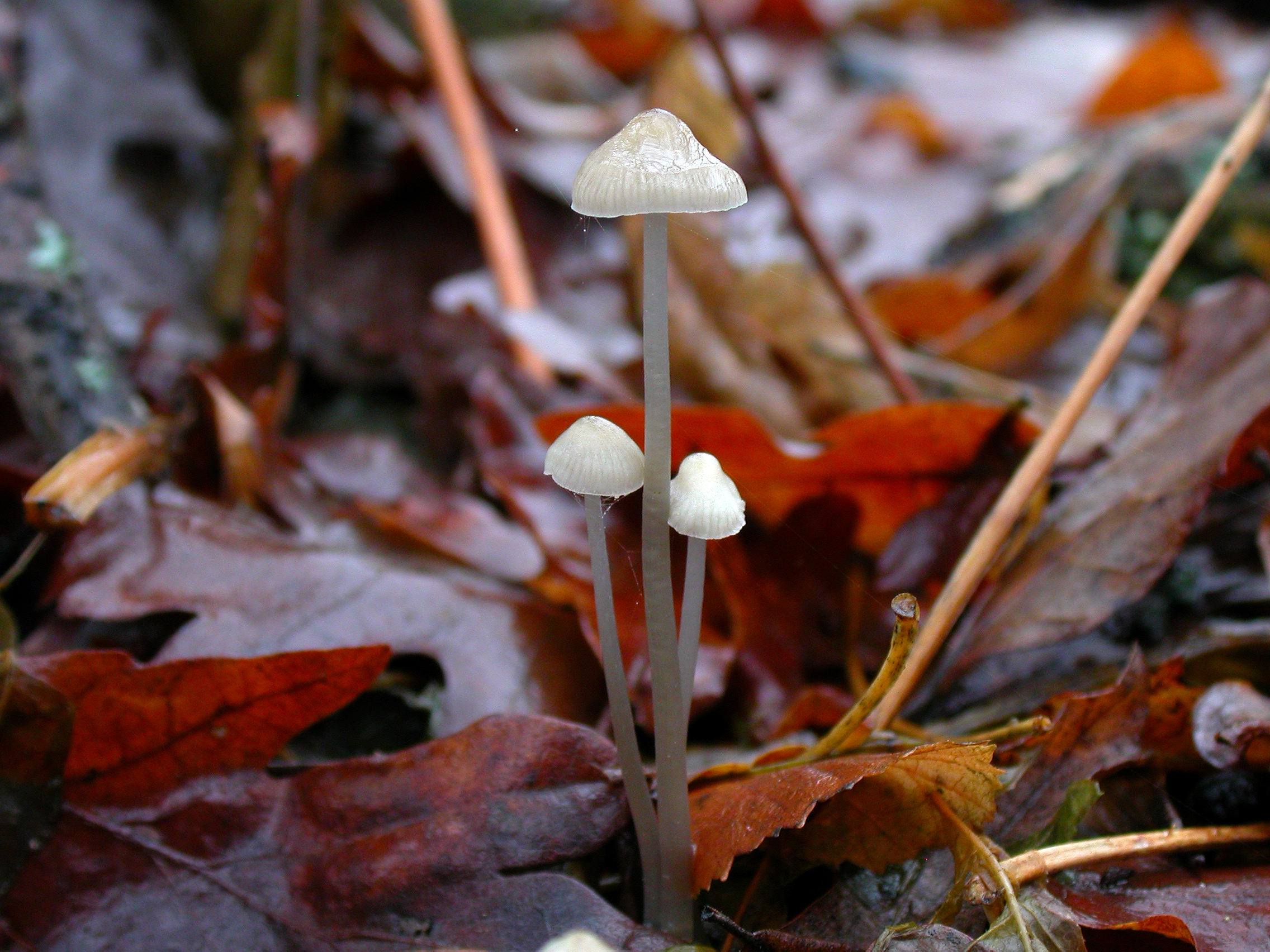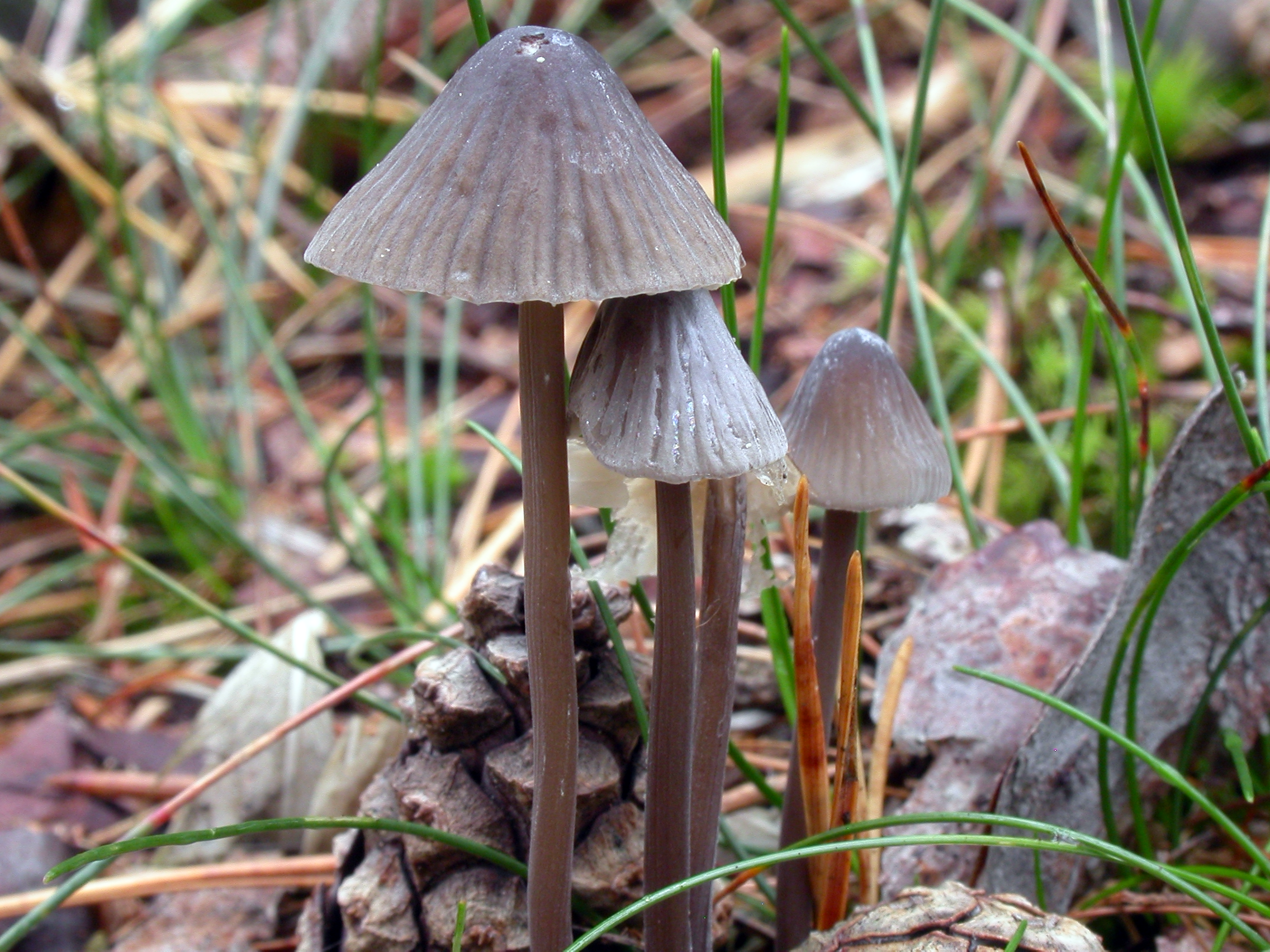Mycena fagetorum
Mycena fagetorum
Description
Microscopic characters.
Cap 10-25 mm across, broadly campanulate to more or less convex, mostly with a low umbo or slightly flattened or depressed, sulcate, translucent-striate, glabrous, lubricous when wet, at very young stages greyish brown with white margin, becoming pale grey brown to brown, darker at the centre. Gills 23-29 reaching the stem, adnexed or emarginate, sometimes decurrent with a short tooth, rugulose and dorsally intervenose with age, pale grey to brownish. Stem 30-70 x 1-2 mm, cylindrical, equal, curved below, cartilaginous, breaking with a snap, pruinose, glabrescent, greyish brown to dark brown with somewhat paler apex, attached with long, white fibrils. Odour indistinctive or faintly farinaceous. Basidia 22-28 x 5.5-7 µm, clavate, 4-spored. Spores 8-10.9 x 3.5-4.9 µm, Q = 1.9-2.8, Qav ˜ 2.3, narrowly pip-shaped to almost cylindrical, amyloid. Cheilocystidia 13.5-40 x 4.5-10 µm, clavate to somewhat irregularly shaped, covered with few, rather coarse, unevenly spaced, simple to somewhat branched, straight or curved or even flexuous excrescences. Pleurocystidia not observed. Lamellar trama dextrinoid. Hyphae of the pileipellis 2-3 µm wide, covered with simple to much branched excrescences which tend to form dense masses. Hyphae of the cortical layer of the stem 2-3 µm wide, smooth to sparsely diverticulate, terminal cells clavate with excrescences. Clamps present in all tissues.
Ecology and distribution
On fallen leaves of Fagus typically in heath forests (low pH). Autumn. Rare in Norway.




